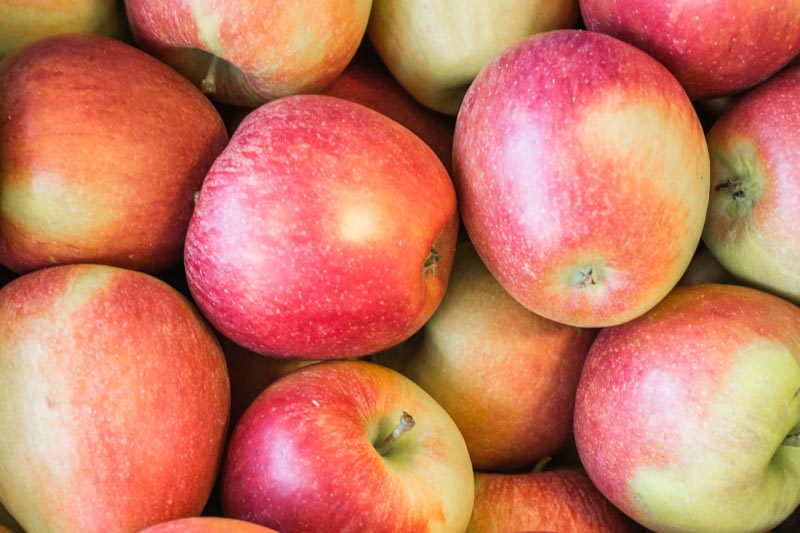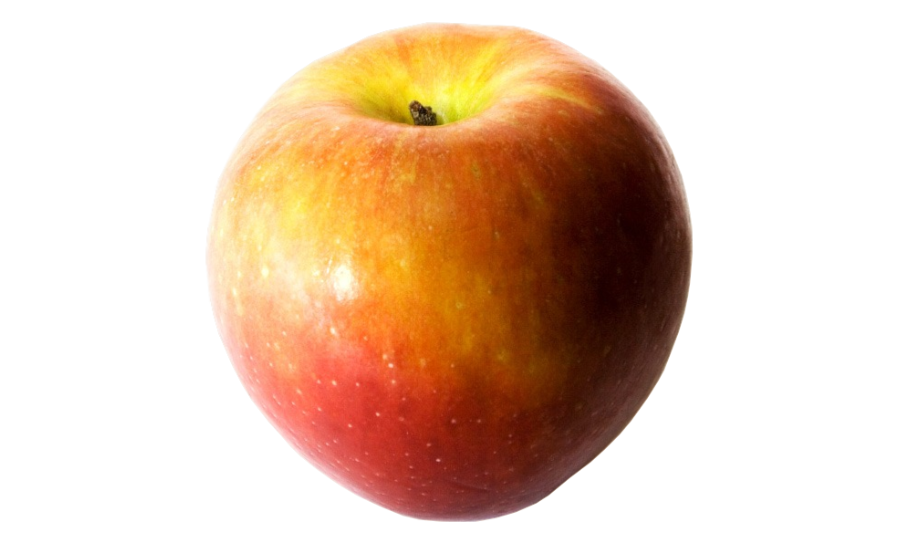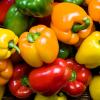Braeburn Apples | Apples In General | Facts About Apples

Apples; probably one of the most commonly produced and consumed fruits in the entire world. They’re big, round and juicy. May it be for cooking, or may it be just for a quick snack throughout the day; they’re great. What’s more is, they’re year-round!
This article mainly focuses on the Braeburn cultivar, though we will explore the apple as a whole too.
Braeburn Apples are mainly red, with slight green streaks. The more ripe a Braeburn is, the red it is (and less green shows). Braeburn apples are probably one of the most commonly consumed cultivars of apples. This cultivar is primarily and kind of globular and of medium to large size. It has a “belly button” with a stem coming out of the top of it, which isn’t usually consumed. The fruit is sweet though Tart and does not have a sugary “honeyed” taste like some other apples may. One may notice a touch of melon/pear when biting into a fully ripe Braeburn. The apple is firm yet crispy, and the flesh is juicy. The skin is thin too but is still tough enough to resist bruising.
Braeburns were discovered in 1952 at the Braeburn Orchard in New Zealand, meaning that the apple was named after the orchard. Once it was discovered, it was cultivated by the Williams brothers.
Apples are generally high in fibre, Vitamin C and antioxidants, not to mention their high percentage of water content (about 82%).
Fibre is a type of carbohydrate that the body cannot digest. Most carbohydrates get broken down into sugar molecules, but Fiber cannot. Fibre passes through the body unaltered, helping the body regulate its use of sugars, and to keep hunger and blood sugar in check
Oxidative Stress is something that can cause chronic diseases and premature ageing. Braeburns have antioxidants, which help combat this process.
Vitamin C is useful to help protect our cells and to keep them healthy. It also helps maintain healthy skin, blood vessels, bones and cartilage.
Apples, or the Malus sieversii, is recognised as the major apple-ancestor from which most apples come today. Genetic analysis suggests that the apple comes from Central Asia. Records imply that the apple started to get domesticated from between 10 thousand years ago to 4 thousand years ago. It was then transported across the Silk Road to Europe. The main traits that are looked at when new apples are cultivated are the size, fruit acidity, colour, firmness and the amount of soluble sugar it contains.
Apples can be used in dishes or eaten raw, I personally just eat them as a healthy, refreshing snack due to their high water content. However, they’re delicious in a large range of things, such as Apple Crumbles (one of my personal favourites) or even Apple Pies!
Share this post
Topics
- History
- FAQS
- Fruit and Veg Delivery
- Information
- Statement
- Announcement
- COVID-19 Statement
- 10 Amazing Vegetables
- 10 Healthy Vegetables
- 10 Amazing Fruits
- Veg
- Fruit
- Eggs
- Marshwoodfarm
- Bank holiday
- Easter closure dates
- Cherries
- Oneshow
- Peaches
- Apples
- Peppers
- Clementines
- Bean sprouts
- Top 5
- Corporate Responsibility Statement
- New Product
- Sustainability
- Tea
- Cucumber
- Snack Boxes
- Healthy
- Employee Perks
- Snacks
- Top 5
- Cultural
- Fruit Buyer's Report
Tags

 Free delivery to selected areas!
Free delivery to selected areas!


















Comments